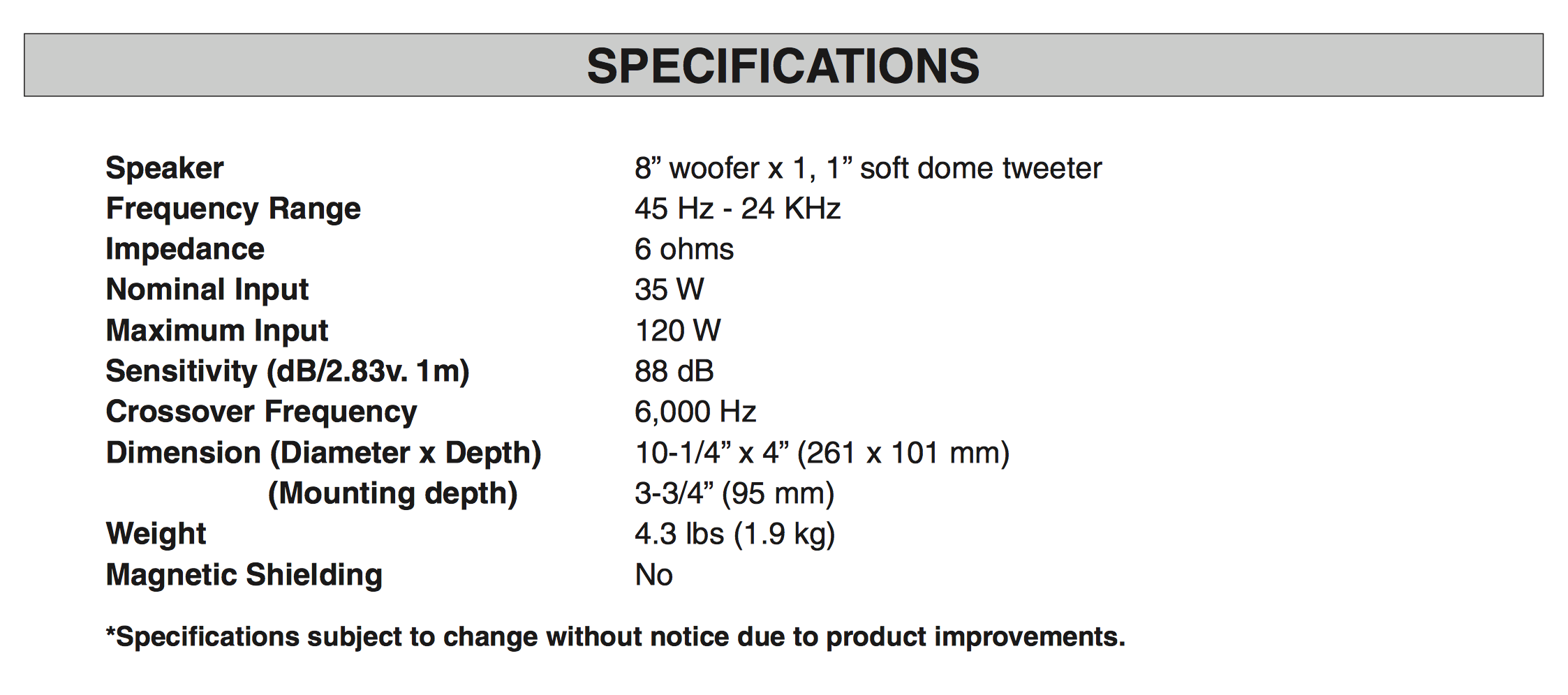I have 4 Yamaha NS-IW360C ceiling speakers with an impedance of 6 ohms each.
How can I connect them to the SONOS Connect AMP to have two stereo zones? (Example: kitchen and dining room)
No need to activate or deactivate any of the zones, they can always sound at the same time.
Should I use a speaker selector? Do you recommend any?
I also have a Yamaha YST-FSW150BL Advanced YST II Down-Firing Active Subwoofer, can I use this subwoofer with the SONOS Connect AMP?
Thank you very much for your help.
Page 1 / 1
6 Ohm impedaance is too low for two pairs of speakers and will cause the unit to enter fault mode. You would need to wire in impedance matching volume controls to each pair.
The Connect:Amp can use any self-powered subwoofer with a line level input. That Yamaha will work fine.
The Connect:Amp can use any self-powered subwoofer with a line level input. That Yamaha will work fine.
The Connect:Amp can use any self-powered subwoofer with a line level input. That Yamaha will work fine.
Dear gatie
Connecting two speakers in parallel the total impedance per channel (Left and / or Right) would be 6/2 = 3 ohms. This configuration we know would not be supported by the Connect: AMP.
By connecting the speakers in series, the total impedance per channel (Left and / or Right) would be 6 + 6 = 12 ohms. Could the sonos Connect: AMP work with an impedance of 12 ohms per channel?
Finally, excuse my ignorance, could you tell me a bit more about "You would need to wire in impedance matching volume controls to each pair".
Thank you very much.
See: https://www.amazon.com/Niles-SSVC-2-Speaker-Selector/dp/B00022LD7A
Dear Kumar.
Thank you very much for your suggestion.
Let me ask, have you used this speaker selector for a similar application? The impedance of the speaker selector is compatible with the Connect: AMP independent of the number of speakers connected to the speaker selector?
About sound quality, how much sound quality is lost when using a speaker selector? And when using a parallel configuration?
Thank you very much.
No, I haven't used one; I solved my problem by using one Connect to feed two amps, each wired to its speaker pair, because I had that kit lying around, but I did research the Niles based on suggestions here. I suggest you read the reviews in the link which are informative. Including one from a user that has a Connect Amp.
What I do know - one chooses models based on how many speaker pairs are to be connected. And they do the impedance matching by restricting the current drawn from the amp to limits that the amp can handle, so there can be a loss of volume to the extent needed, but no other loss of sound quality.
What I do know - one chooses models based on how many speaker pairs are to be connected. And they do the impedance matching by restricting the current drawn from the amp to limits that the amp can handle, so there can be a loss of volume to the extent needed, but no other loss of sound quality.
Dear gatie
Connecting two speakers in parallel the total impedance per channel (Left and / or Right) would be 6/2 = 3 ohms. This configuration we know would not be supported by the Connect: AMP.
By connecting the speakers in series, the total impedance per channel (Left and / or Right) would be 6 + 6 = 12 ohms. Could the sonos Connect: AMP work with an impedance of 12 ohms per channel?
Finally, excuse my ignorance, could you tell me a bit more about "You would need to wire in impedance matching volume controls to each pair".
Thank you very much.
Sonos does not recommend wiring in series. For any speakers pairs lower than 8 Ohms, you would need some sort of impedance matching wired in. Impedance matching will reduce the overall volume to each speaker pair.
See this link for more information on using two pairs of speakers:
Attaching 4 speakers to the CONNECT:AMP
Enter your E-mail address. We'll send you an e-mail with instructions to reset your password.

